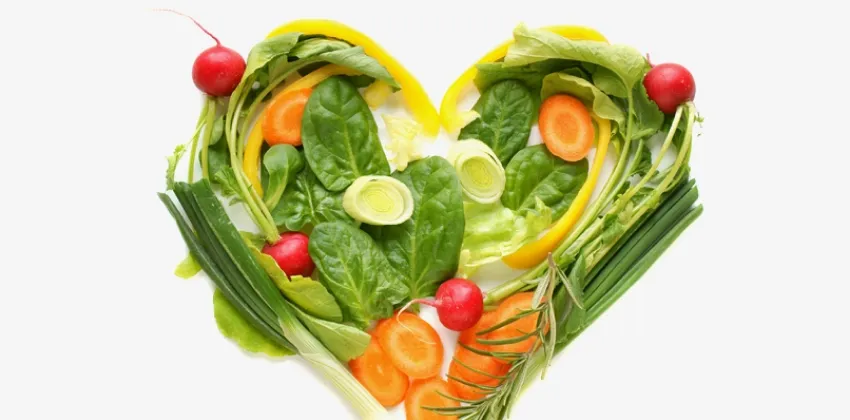
A diet for atherosclerosis is aimed, on the one hand, at limiting foods containing cholesterol and saturated fats, on the other, at strengthening the vascular wall, removing excess cholesterol from the body and providing a sufficient amount of vitamins, trace elements and antioxidants in the diet.
In medical hospitals and sanatoriums, such a diet for patients with cardiovascular diseases is designated No. 10. First of all, it is necessary to exclude foods rich in cholesterol from the diet. A lot of cholesterol is found in by-products (beef liver, kidneys, tongue, brains, chicken giblets, fish roe).
The intake of saturated fat is significantly limited. This is done due to the fact that cholesterol not only enters the body ready-made with food, but is also formed in the liver from the metabolic products of fats. Saturated fats are found in meat (beef, pork, lamb, poultry), as well as in butter, lard and other animal fats, milk, cheese, cream, sour cream, ice cream. Paradoxically, two vegetable oils - palm and coconut - are also high in saturated fat. Consumption of saturated fats among residents of our country is approximately 16-20% of the caloric content of the diet.
Patients with clinical manifestations of atherosclerosis should reduce the intake of saturated fat to 7% or less of the total caloric intake.
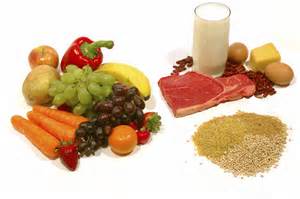
|
To this end, it is necessary to completely exclude or significantly limit in the diet butter, lard, beef, lamb and pork fat, fatty meats, meat products (sausages, hams, smoked meats, pates), fatty poultry, fatty dairy products (cream, sour cream, fat milk and kefir). Only lean meat can be eaten (beef, occasionally lamb and pork, skinless chicken). It is advisable to eat meat no more than 2 times a week. Since meat is an important source of protein necessary for the body, some restriction in meat consumption should be compensated for by a large intake of fish and other sources of protein, for example, legumes, soy products, nuts. Animal fats are replaced in the diet with vegetable fats, which are an important source of omega-6-polyunsaturated fatty acids, which contribute to the elimination of cholesterol from the body. From vegetable fats, olive, rapeseed, soybean, corn, peanut, cottonseed, sunflower oil, and walnut oil are recommended.
Nuts are a desirable part of the diet. You can use any nuts - almonds, hazelnuts, pine nuts, ground nuts, walnuts. It is only important that they are raw (or lightly fried without oil) and unsalted. Sunflower and pumpkin seeds are also recommended. Nuts are high in calories, so if you are prone to overweight, their consumption should be limited.
Another healthy food group is legumes and soybeans. They are rich in vegetable proteins (therefore, they can successfully replace meat in the diet), as well as lecithin, known for its antiatherogenic properties.
The source of beneficial omega-3 polyunsaturated fatty acids is fish, especially fatty ones (various varieties of sea and ocean fish). It is recommended to eat fish at least 2-3 times a week. It is advisable to boil the fish, bake or lightly fry in olive (or vegetable) oil. Eating salted or smoked fish should be occasional.
In addition to fish, other seafood is also beneficial, such as seaweed (seaweed). Shellfish (oysters, scallops, mussels, crayfish, crabs) are very rich in trace elements, but remember that some of them contain a lot of cholesterol. So, in 100 grams of oysters there are 325 grams of cholesterol, in 100 grams of crayfish - 200 grams of cholesterol, and 100 grams of shrimp and crabs each contain 150 grams of cholesterol.
The elimination of cholesterol from the body is facilitated by foods rich in fiber and, especially, pectin: vegetables, fruits, berries, cereals, wholemeal bread, bran, legumes. Their consumption should be significantly increased. In addition, it must be remembered that vegetables, fruits, berries, herbs are a source of vitamins, trace elements, as well as antioxidants that prevent fat oxidation. Every day you should consume at least 400 grams, and preferably more than 600 grams of vegetables and fruits.
600 g of vegetables and fruits per day is the rate of consumption of vegetables and fruits necessary for the health of a modern person, recommended by the World Health Organization.
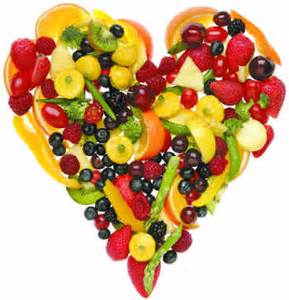
|
600 g of vegetables and fruits is about three medium-sized fruits (1 apple, 1 banana, 1 orange) + a serving of cabbage (about 2 tablespoons of stewed cabbage) or 1 large tomato.
Why are fruits and vegetables so important for the prevention and treatment of atherosclerosis? The fact is that, in addition to a number of compounds useful for the body (vitamins, microelements, etc.), they contain a lot of fiber. And fiber is an excellent natural adsorbent - a substance that removes cholesterol and fat-like substances from the body.
Vegetables and fruits should preferably be eaten with cheese or lightly cooked. You can also use dried fruits.
The diet should be rich in vitamins, especially ascorbic acid, which activates the breakdown of cholesterol in the liver, reducing its content in the blood and preventing deposition in the arterial wall. Vegetables and fruits of our northern latitudes and middle zone are rich in ascorbic acid, especially black currants, black mountain ash, rose hips.
In addition to ascorbic acid, foods should contain vitamins E and A, B vitamins, which are abundant in whole grains and to a lesser extent in raw greens.
The body must be enriched with mineral salts and microelements, in particular - potassium, iodine, magnesium, manganese. Sources of potassium are apricots (including dried apricots), figs, eggplants, and potatoes. A lot of magnesium salts are found in wholemeal bread
and cereals. There are a lot of trace elements in seafood, they also contain a complete protein, as well as B vitamins, organic iodine. Organic iodine increases the formation of the main thyroid hormone, thyroxine, in the body, which stimulates the oxidation of fats. The treatment of obesity with thyroid hormones used to be based on this.
It is important for overweight patients to normalize their weight. To do this, it is necessary to reduce the calorie content of food (by 10-15%) due to easily digestible carbohydrates and fats.
It is necessary to reduce the consumption of sugar, sweets, sweets, preserves, jams, confectionery, ice cream, sugar-containing drinks (compotes, lemonades, drinks such as Pepsi-Cola, Sprite, etc.). It is advisable to replace sugar in the diet with natural honey and use it in a limited way, taking into account the calorie content. Finally, about the content of table salt in the diet. It should be no more than 5 g per day, since excess salt intake contributes to fluid retention in the body, the development and progression of hypertension.
Experts from the European Society of Atherosclerosis (Study Group, European Atherosclerosis Society) in 1987 formulated seven "golden" dietary rules, the observance of which is necessary to eliminate lipid metabolism disorders. These dietary rules are still valid today:
1. Reduce your total fat intake.
2. Dramatically reduce the intake of saturated fatty acids (animal fats, butter, cream).
3. Increase the consumption of foods enriched with polyunsaturated fatty acids (liquid vegetable oils, fish, seafood).
4. Increase the intake of fiber and complex carbohydrates (vegetables, fruits, cereals).
5. Replace butter with vegetable oils for home cooking.
6. Dramatically reduce your intake of cholesterol-rich foods.
7. Dramatically reduce the amount of table salt in the food intake.
What is useful to include in the diet for atherosclerosis?
Recommended dishes and products
Figure: /information/img/thCAVGA01Z.jpeg
• Drinks - vegetable, fruit and berry juices, rosehip infusion, green tea.
• Bread - from wholemeal flour, better - with bran.
• Fats - vegetable oils for dressing salads and for cooking (preferably stew rather than fry). The consumption of animal fats is minimized.
• First courses - vegetable, cereal, vegetarian, fruit soups. Meat or chicken broth is trimmed.
• Second courses - from low-fat varieties of beef, lamb, poultry (without skin). Oily fish is recommended at least 2-3 times a week.
• Side dishes - cereals (buckwheat, oatmeal, rice), fresh, baked or stewed vegetables, legumes.
• Dairy products - milk, kefir, fermented baked milk, yoghurt with a fat content of 0.5–1%, low-fat cottage cheese, low-fat types of cheese.
• Dishes for dessert - jelly, unsweetened compotes, fruits in raw, baked and boiled forms.
How to change food
To maintain health in general, and slow down the course of atherosclerosis in particular, it is important to reduce body weight to a proper and low-cholesterol diet. To do this, you will have to change the diet. Diet modification is not an easy task for anyone. It requires changing the habitual stereotypes of behavior, and this is always not easy. How to achieve this goal? First, analyze which of the nine below you can relate to. Check the corresponding boxes:
The food you buy:
o You buy a lot of ready-made and easy-to-cook food.
o You buy butter and other dairy products containing fat (for example, cheese, whole milk, sour cream, etc.).
o You buy steaks, chops, fatty meats.
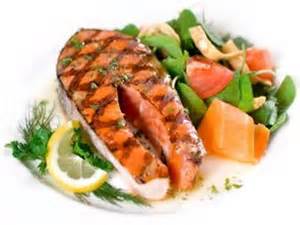
|
The food you eat:
o You eat a lot of fried foods and flour products.
o You like food with greasy gravy and sauces.
o When dining out, you choose food to taste, regardless of health.
Your lifestyle:
o You do not pay attention to your excess weight.
o You do not exercise regularly.
o You have never checked your blood cholesterol level, and if you did, it was a long time ago.
The more formulations you attribute to your account, the more likely your body weight and cholesterol levels are, and the more you will benefit from following our healthy eating guidelines.
If you are overweight and need to lose weight, it is necessary to start with reducing the calorie content of food and changing the qualitative composition of food.
The average calorie content of a Russian's diet is about 2400 kcal.
A low calorie diet involves reducing calories up to 1500-1200 kcal per day.
To lower cholesterol levels, it is necessary to limit the consumption of foods containing cholesterol and animal fats. With a high level of cholesterol, a high risk of developing cardiovascular diseases, as well as in patients with clinical manifestations of atherosclerosis, fats are limited to 7% of the total diet.
Below are tables showing the composition, calorie content of foods and the percentage of cholesterol in staple foods. Using these tables, you can calculate the daily diet and make a menu taking into account the calorie content of food, its fat content and cholesterol levels.
Average calorie content of some food products (kcal per 100 g)
| Chicken egg | 78 | Vegetables | 25 | |
| Butter | 748 | Mushrooms | 30 | |
| Margarine | 744 | Potatoes | 80 | |
| Vegetable oil | 898 | Fruit | 45 | |
| Mayonnaise | 630 | Compotes | 75 | |
| Sour cream 20% | 294 | Milk yoghurt | 86 | |
| Cream 20% | 206 | Milk, kefir 1% | 51 | |
| Cottage cheese 18% | 226 | Curd 0% | 86 | |
| Curd 9% | 156 |
Low-fat cheeses, less than 30% fat (feta cheese, suluguni, poshekhonsky) |
260 | |
| Curd cheeses | 330 | Boiled low-fat fish | 100 | |
|
Fatty cheeses, more than 40% fat |
375 | Medium fat boiled fish | 228 | |
| Boiled sausage, sausages | 260 | Herring | 234 | |
| Cooked-smoked sausage | 260 | Boiled lean beef | 267 | |
| Raw smoked sausage | 500 | Boiled lean pork | 227 | |
| Cakes | 550 | Chicken meat dark | 170 | |
| Halva | 510 | Chicken meat white | 155 | |
| Chocolate | 540 | Boiled lean duck | 170 | |
| Caramel | 375 | Rye bread | 190 | |
| Sugar | 374 | Wheat bread | 203 | |
| Jams, jams | 260 | Oatmeal porridge on the water | 52 | |
| Rolls, muffins | 275 | Kvass | 25 | |
| Ice cream | 226 | Honey | 310 | |
| Walnuts | 700 |
Cholesterol content in main products (mg per 100 g of product)
| Chicken egg yolk (1 pc) | 202 | Milk 6%, fermented baked milk | 24 | |
| Liver | 438 | Milk 3%, kefir 3% | 15 | |
| Canned cod liver. | 746 | Milk 1%, kefir 1% | 3 | |
| Kidney | 1126 | Milk, skim kefir | one | |
| Language | 90 | Cottage cheese 18% | 57 | |
| Caviar red, black | 300 | Curd 9% | 32 | |
| Beef, lamb fat | 100 | Curd 0% | nine | |
| Pork, chicken fat | 100 | Curd cheese | 71 | |
| butter | 242 | Fat cheese | 92 | |
| Shrimp | 150 | Low-fat cheeseoh, feta cheese | 68 | |
| Crabs, squids | 95 | Processed cheese | 64 | |
|
Fish canned food in its own juice |
95 | Sausage | 32 | |
|
Canned food fish in tomato sauce |
51 | Boiled sausage | 60 | |
|
Sea bass, catfish, carp, bream, herring, sturgeon |
88 | Cooked-smoked sausage | 90 | |
| Cod, hake, pike perch | 65 | Raw smoked sausage | 105 | |
| Boiled lean beef | 94 | Loin, brisket | 80 | |
| Boiled lean pork | 88 | Ice cream sundae | 47 | |
| Boiled lean lamb | 98 | Ice cream creamy | 35 | |
|
Rabbit, goose, duck boiled lean |
90 | Milk ice cream | 14 | |
|
Chicken meat dark, boiled, skinless |
89 |
Olive oil, sunflower oil, corn, soy |
0 | |
|
White chicken meat, boiled, skinless |
80 |
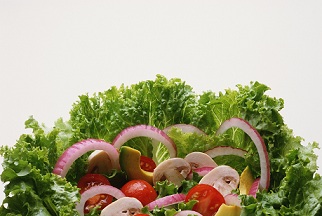
|
In the presence of a high level of cholesterol in the blood, its amount in food is limited to 300 mg per day, and if the effect is insufficient, they switch to taking 200 mg or even 100 mg per day. Significantly restrict carbohydrates, especially severely in the presence of diabetes mellitus.
After changing your diet, do not forget to check the level of cholesterol and its components in the blood every three to six months.
When choosing foods to lower or maintain your desired cholesterol levels, start by changing the foods you buy at the market or store. Maybe at first you will be wrong, but gradually gaining experience, you will begin to choose the right products correctly, pay attention to the labels and the calorie content, percentage of cholesterol and fat indicated on them.
When choosing, give preference to low-calorie foods such as vegetables, fruits, skim milk and cottage cheese, fatty fish, lean meats and poultry (without skin).
What foods cause weight gain?
Look carefully at the table and think about what constituents of food are most likely to contribute to weight gain:
|
Component Food |
Contents kilocalories in 1g |
Stomach filling |
Feeling of fullness |
Ability to be deposited in the body "in reserve" |
|
Fats |
nine |
Low |
Low |
High |
|
Alcohol |
7 |
Low |
Low |
High |
|
Proteins |
four |
High |
High |
Low |
|
Carbohydrates |
four |
High |
High |
Low |
|
Fiber |
1.5 |
Intermediate |
Low |
Low |
|
Water |
0 |
High |
Low |
Low |
As you can see, fats and alcohol highlighted in bold are the most "harmful" for the figure, since they contain the most calories, poorly satisfy the feeling of hunger and do not create a pleasant feeling of satiety. In addition, foods containing fats are much tastier than others, and you want to eat more of them. The most beneficial dietary ingredients for people looking to lose weight are fiber and water. Proteins and carbohydrates occupy an intermediate position, and carbohydrates are no more high in calories than proteins. At the same time, simple carbohydrates should be limited, since they trigger the release of insulin, which promotes fat storage.
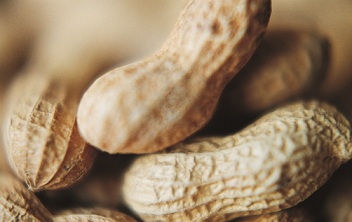
|
The role of proteins in the diet
Proteins are the "building blocks" for all body tissues - their renewal, growth and development. Proteins are of animal origin (most of them are found in meat, poultry, fish, dairy products) and plant origin (the main sources are beans, peas, mushrooms, nuts, cereals, soy products, bread). It is better to replace part of animal proteins in the diet with vegetable ones. The daily requirement for animal protein is contained in about 300 g of cottage cheese, cheese, meat or fish.
The role of carbohydrates in the diet
Carbohydrates are a source of energy for the body and are divided into assimilable (quickly assimilated) and indigestible (slowly assimilated):
• fast-digesting or simple carbohydrates: sugar (sucrose), fruit sugar (fructose), milk sugar (lactose), grape sugar (glucose) and malt sugar (maltose). These are sugars in their pure form, as well as those found in sweets and sugary drinks;
• slow-digesting or complex carbohydrates - starch-containing products: bread, pasta, potatoes, cereals (buckwheat, barley, oatmeal, pearl barley, millet, rice). The source of indigestible carbohydrates useful for the body is also vegetables and herbs, fruits and berries, legumes. All these products contain fiber, pectin in large quantities and therefore contribute to the elimination of cholesterol from the body. The dietary fiber they contain is not absorbed by the body, and at the same time creates a pleasant feeling of fullness by filling the stomach. The main thing is that when consumed wisely, they do not affect body weight.
Sources of carbohydrates
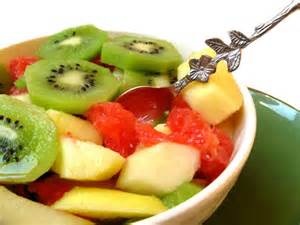
|
Quickly assimilated - "harmful" carbohydrates containing sugar: sugar, honey, jam, confectionery, juices and sugary drinks, liquid dairy products.
Fruits: melon, grapes, bananas, dates
Try to give preference to indigestible and slowly digestible carbohydrates. With regard to rapidly digestible carbohydrates, their consumption should be limited, and in patients with diabetes mellitus should be minimized.
The role of fats in the diet
Fats are divided into saturated (mainly animal) and mono- and polyunsaturated fats (mainly vegetable).
Saturated fat is the most high-calorie constituent of food and contains significant amounts of choles.
terin and promotes the formation of cholesterol in the liver. Therefore, their restriction in the diet should be the main principle of a healthy lifestyle. Saturated fats are found in butter and ghee, lard, sour cream, cream, full-fat milk and cottage cheese, meat,
poultry, boiled and smoked sausage, cheese.
Mono- and polyunsaturated fats are found in vegetable oils, olives, nuts, seeds. Vegetable fats contain omega-3 and omega-6 polyunsaturated fatty acids, which help to eliminate cholesterol from the body. Therefore, animal fats in the diet should be replaced with vegetable fats. But vegetable fats should be consumed in small quantities (up to 30 g), since they are higher in calories than animal fats. That is, they contribute to weight gain. Of all vegetable oils, it is undesirable consuming only 2 types of them: palm and coconut oils (since they contain saturated fats).
Excess fat is the main reason for being overweight!
It is necessary to avoid the so-called "hidden" fats - fats that are not visible to the eye (unlike, for example, pork leg with a rim of fat). Lots of hidden fats in cheese, cooked sausages, sausages, smoked meats, confectionery, biscuits, ice cream.
Fast weight loss requires a sharp reduction in the diet and is highly undesirable. First, a sharp restriction of food intake is perceived by the body as a signal of "natural disaster", and it begins to store fat in reserve. Secondly, food is one of the pleasures of life. The deprivation of this pleasure often leads to the fact that, with the observance of strict diets, mood decreases, sleep is disturbed, and irritability appears. No one can withstand such a test for a long time. And there is a natural return to the usual diet, and therefore to the extra pounds lost with such difficulty.
You will do the right thing if for advice on a program for weight loss and normalization of blood lipids, contact a specialist - a dietitian, therapist or cardiologist. At the same time, it is important that the program for controlling body weight be individual, that is, compiled by a doctor taking into account the food tastes of a particular person. In this case, it will be easier and more enjoyable to follow the diet.
Tips for getting to the market or grocery store
• When planning to go to the grocery store or the market, make an accurate shopping list in advance and stick to it.
• Read food labels and pay attention to calorie and fat content. Try not to buy foods that have more than 3 grams of fat per 100 grams of food. Give preference to products
low in cholesterol and fat.
• Learn to identify the so-called "hidden fats" in foods.
• Do not blindly trust the words "low in fat" or "low fat" - these foods may contain more calories than you think.
• Do not be persuaded by market sellers to buy more products from them than you planned.
• Buy mainly vegetables, fruits and cereals (rice, buckwheat and oatmeal, millet, etc.).
• Never go to the market or shop if you are hungry.
Buy healthy foods
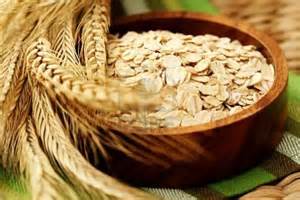
|
When buying food in the store, make sure that they contain less fat: milk and dairy products (kefir, fermented baked milk) - 0.5 - 1.0%, low-fat yogurt, low-fat cottage cheese, sour cream (occasionally) - 10-15%; lean meat and poultry. Pass by those sections of the store where smoked meats, lard, mayonnaise, margarine, fatty meats, fatty cheeses (more than 40% fat), butter, some canned food (eg sprats, cod liver) are sold.
We remind you again that poultry without skin contains less fat. Remove skin from poultry and visible fat from meat. And fish, on the contrary, is healthy fatty.
Fresh vegetables and fruits can be eaten without restrictions if you do not have diabetes. When doing this, keep an eye on the calorie intake, as fruits and vegetables are healthy, but they still contain calories. The most nutritious fruits are bananas, grapes, avocados.
In addition to buying your groceries wisely, it is important to properly prepare your food.
Cook healthy food
To change your diet towards healthier, you need to know some of the features of the technology of cooking healthy food.
Never cook more than you need to.
When preparing salads, avoid seasoning them with mayonnaise and salad dressings. Use vegetable oil for this purpose, but in small quantities, since it is no less high in calories than animal fats.
Food should be prepared to use the minimum amount of fat while maintaining the flavor of the food. It is advisable to give before reverence for baking, steaming, boiling and very light frying (in a very small amount of vegetable oil and no more than 1-2 minutes).
Recommended diet
Not only the composition of food, but also its correct intake will help you not to gain extra pounds and not raise blood cholesterol levels.

|
• Eat small meals 3-5 times a day.
• Food should be taken at the same time, which you set yourself (due to the nature of your work), but after 7 pm you do not have dinner.
• Avoid skipping breakfast or starving all day so you can have dinner at 8-9 pm later. A cup of coffee is not breakfast either.
• Don't go to the other extreme: don't snack all the time. If you feel hungry, have lunch, but do not drink tea with sandwiches or cookies with your colleagues several times a day.
• Observe yourself: You may be eating a lot when you are worried or disturbed, or when you are in a bad mood, or while watching an exciting football game on TV. Try to gradually get rid of this unhealthy habit.
• Do not "seize" stress, learn to relieve them with the help of psychological relaxation techniques.
• Never eat in company unless you are hungry.
• Before meals, drink a glass of still water, and start your meal with low-fat soup or salad.
• Watch the portion size, do not take additives (except for vegetable dishes).
• Forget the advice you were given as a child that it is not good to leave uneaten food on your plate. Now do the opposite: never finish eating until you are hungry.
• If you "lost it" and ate more than recommended, do not despair. The next day, arrange for yourself an unload: for example, 2 liters of low-fat kefir or milk, or 1.5 kg of apples during the day, or 1 kg of zucchini and 200 g of lean meat per day. At the same time, water or tea can be drunk without restrictions.
• Eat slowly, chewing food thoroughly. If we eat too fast, the feeling of fullness "lags behind" the amount of food consumed, as a result we overeat. Better to leave the table, not fully satiated.
• If you drink water, juices, or other drinks while eating, take small sips - the principle of this advice is the same as the previous one.
• Eat soups without bread, having previously removed the fat from them - this is easy to do if you first cool them in the refrigerator.
• Be guided by the motto: "Vegetables and herbs as a main course, meat as a side dish!".